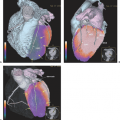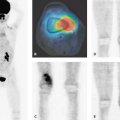Introduction
Despite the successes of medical therapy, infectious disease and noninfectious inflammation remain major clinical problems in daily practice. Acute and chronic inflammation in general are characterized by different physiologic alterations that have to be considered when interpreting imaging studies. Vasodilatation, exudation of plasma proteins, and escape of neutrophil granulocytes from blood into parenchyma occur in the acute stage, whereas in chronic inflammation, infiltration with activated macrophages and lymphocytes dominates. Magnetic resonance imaging (MRI) and the various conventional scintigraphic methods detect acute inflammatory changes with high accuracy, whereas specificity is decreased with chronic inflammation.
Stay updated, free articles. Join our Telegram channel

Full access? Get Clinical Tree







